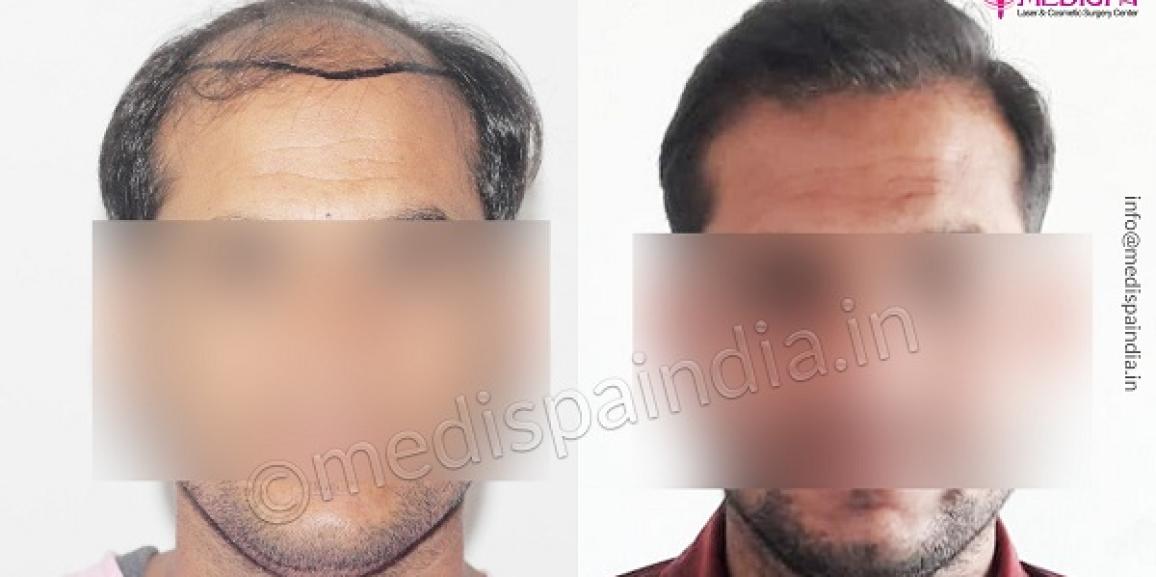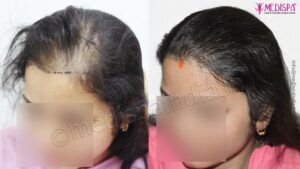
Hair transplants had a bad image decade ago, and the outcomes were plugged hairs, which did not meet the most crucial requirements of this cosmetic procedure, “aesthetics.” We have now achieved the pinnacle of technological developments, and we can effectively achieve flawless outcomes in terms of long-term and natural effects.
Hair loss is a sensitive worldwide aesthetic issue that affects every country. As a consequence of its one-of-a-kind ability to provide long-lasting outcomes, this method has gained worldwide acclaim. Hair transplant surgery includes moving hair follicles from the donor area (usually the back and sides of the head, but sometimes body hairs) to the bald area of the recipient. There are several stages to follow in order to complete this treatment effectively, including:
Local anaesthetic is administered in the donor and recipient areas.
- Hair follicular grafts are harvested from a donor location that has been chosen based on hair density.
- Slits are formed in the recipient site in accordance with the natural hairline pattern.
- Hair follicular grafts are transplanted into the slits that have been made.
- After 24 hours, post-operative cleaning of small clots around transplanted hair follicles
- Follow-up and aftercare
Harvesting grafts is the most important step in hair transplantation since it determines how much of the bald region is covered. These hair transplant procedures are split into two categories based on the process used, which include:
- FUT (Follicular unit transplantation, often known as strip method) is a hair transplant procedure that involves removing a narrow strip from the donor region and then separating individual hair follicles under high magnification.
- FUE (follicular unit extraction): In this hair transplant procedure, each graft is harvested individually using a punch-like surgical equipment with variable diameters depending on the necessity.
These strategies are chosen depending on a variety of considerations and the unique needs of each patient. When a large number of grafts are required, such as 3000-3500, the FUT procedure is preferable. When a smaller number of grafts (about 2000-2500 grafts) is required, the FUE procedure is suggested. However, in cases of significant baldness where either treatment appears insufficient, a novel approach that combines FUT and FUE has been favoured. The combined procedure allows for the administration of a large number of hair follicular grafts in a single sitting while also preserving more grafts for future sittings.
Combination technique of FUT and FUE
What is the combination technique?
Because the hair grafts are obtained using both techniques, this approach combines FUT and FUE in a single session. FUE hair transplant is used to extract the residual count of hair follicles of approximately 1500 hair grafts, whereas FUT hair transplant is used to harvest the higher count of harvesting of around 3000–3500 hair grafts.
Roughly 1.5 cm of a strip is harvested from the donor area in this procedure, with around 2 cm of the area below the harvested strip left intact. The section that has been left empty is meant to be utilized for future sittings if they are necessary during future trips. Then, below 2 cms, a FUE hair transplant is conducted, with individual hair grafts plucked using a punch device from a higher inter distance, as this approach requires a lower number of hair grafts to be harvested. This is how this procedure produces a better yield of hair transplants.
In what conditions combination technique is indicated?
In complicated situations, the utilisation of a mix of FUT and FUE procedures has enabled the delivery of high density coverage. This method is especially advantageous for persons with severe baldness, since it allows them to get the necessary coverage in only one session. As a result, this strategy has some advantages over the others and is suggested in the following scenarios:
- Advanced baldness, such as Norwood class VI or VII
- When donor hair density is insufficient
- When a doctor predicts that you will develop increasing baldness
- When a hair transplant with a high density is required
Significance of combination technique of FUT and FUE?
- The combined approach has the extra benefit of enabling for the harvesting of up to 4000 follicular grafts, which is not possible with either technique alone. FUT hair transplant can yield 3000-3500 grafts, but FUE hair transplants can yield up to 1500 grafts of residual follicular grafts.
- The combination method provides for the retention of follicular units for future sittings in cases of increasing hair loss.
- This approach results in scarring that is almost unnoticeable. The sutures are placed using a complex method termed trichophytic closure, which allows for nearly undetectable scarring throughout the FUT surgery. The circular scars are nearly unnoticeable because the follicles are harvested from a distance using the FUE process.
Book an appointment with Medispa to make your dream come true if you have significant baldness and want the finest possible outcomes.
Hair transplant clinics in Jaipur and Delhi provide the best hair transplant utilising cutting-edge technologies at an affordable price. We are the most well-known hair transplant clinic in the world, with patients travelling from all over the world to see us. The hair transplant cost in Jaipur is quite modest, and we provide the greatest hair transplant results for a fair price. Dr. Suneet Soni was the first to introduce the bio stimulated combination FUT and FUE process in Delhi and Jaipur, and he has now expanded the technology to include Beard hair transplantation. His devotion to the field of hair transplantation, as well as his one-of-a-kind talents, have garnered him recognition at national and international conferences.






